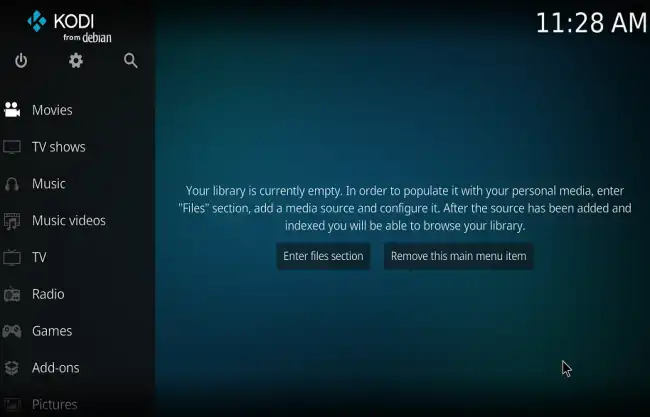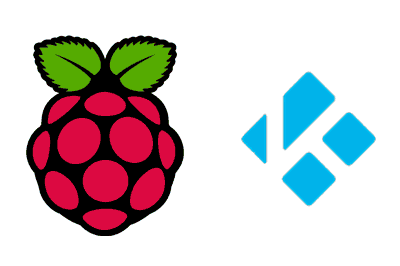Kodi is an open-source, cross-platform media center that allows the management and playback of audio, video, and images on a wide variety of devices.
Kodi offers a complete home entertainment experience, allowing for the management and playback of multimedia content in an intuitive and flexible manner.
Previously known as XBMC (Xbox Media Center), Kodi has become the most common solution for creating your own home player.
With Kodi, we can play content either on the Raspberry Pi itself, with a plugged-in hard drive, or (the star option ⭐) directly from another device over the network (SMB, DLNA, Airplay, etc).

Some of the most important features of Kodi include:
- Cross-Platform Compatibility: Works on a variety of operating systems, including Linux, Windows, macOS, iOS, and Android.
- Support for Multiple Formats: Plays a wide range of video, audio, and image formats.
- Add-ons and Extensions: Allows for additional functionalities through add-ons, such as streaming services, music services, and more.
- Customizable Interface: Offers a user interface that can be customized with themes and skins.
- Media Library: Automatically organizes and categorizes your multimedia files.
For more information on advanced configuration and Kodi add-ons, check the official Kodi documentation.
Installing Kodi on Raspberry Pi
To install Kodi, we first make sure our Raspberry Pi is updated before we begin. We update all packages on our Raspberry Pi with the following commands:
sudo apt update sudo apt upgrade
Next, we install Kodi, which is available in the official Raspberry Pi OS repositories, using the following command:
sudo apt install kodi
This command will download and install Kodi along with its dependencies. After installation, we can start Kodi from the applications menu or by running the following command in the terminal:
kodi
When we run Kodi for the first time, we will encounter an initial interface that will allow us to configure various aspects of the program.
Basic Kodi Setup
Once Kodi is up and running, here are some steps to set up and customize your media center:
Setting Up the Media Library
Kodi can automatically organize your multimedia files into a library. To do this, follow these steps:
From the main screen,
- Go to Videos or Music.
- Select Files and then Add Videos or Add Music.
- Navigate to the folder where we have our multimedia files and add it to Kodi.
Once we have added the files, Kodi will scan the folder and update its library automatically. This process may take a few minutes depending on the number of files.
Installing Add-ons and Extensions
Kodi allows you to add additional functionalities through add-ons, which can include streaming services, media management tools, and more.
To access the add-ons, we go to the main Kodi screen and select Add-ons. Then, we select Download to explore the available add-ons.
To install an add-on, we select the add-on we wish to install and follow the on-screen instructions. Some add-ons may require additional configuration, such as logging into a streaming service.
Customizing the Interface
Kodi offers several options to customize the appearance of its interface.
To change the skin, we go to Settings from the main screen, select Interface, and then Skin. Here we can choose from different skins to change the appearance of Kodi.
To configure themes, which allow us to modify the visual aspect of the interface, we can find and download new themes through the Kodi add-on repository.
Web Interface
Kodi has a web interface that allows you to control Kodi from any device connected to the same local network. For example, you can use your phone or tablet to control Kodi from the couch. It’s uglier than it is alone, but it works.
To access the Kodi web interface, we go to “Options / Settings / Services” and there select Control, and enable HTTP control:
Now open a web browser on any device connected to the same local network as your Raspberry Pi. We type the IP address of your Raspberry Pi followed by “:8080” in the browser’s address bar.
For example, if the IP address of your Raspberry Pi is “192.168.0.10”, you would type “192.168.0.10:8080” in the address bar.

